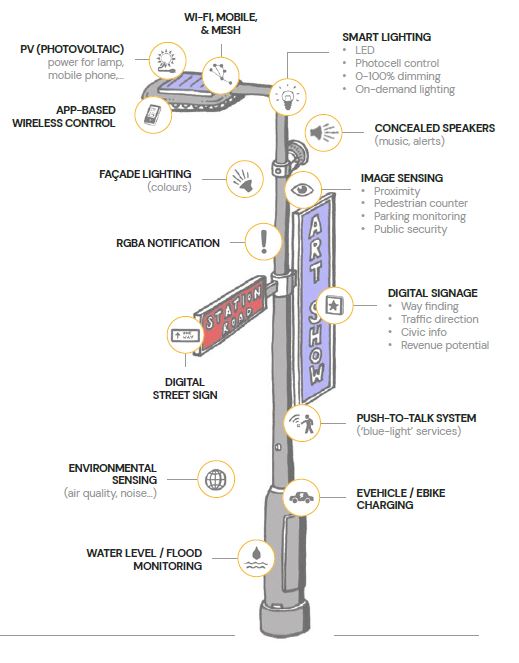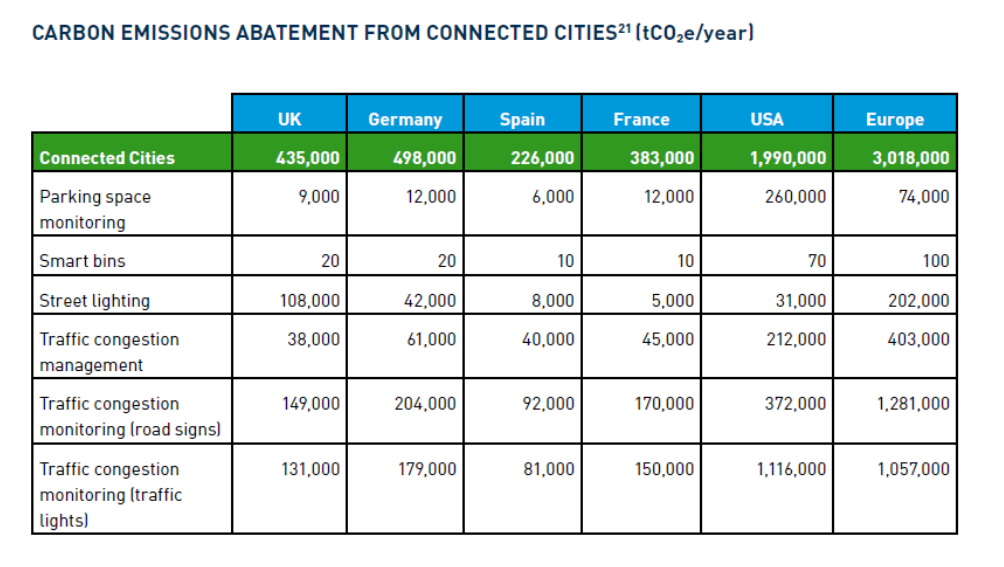Street lighting is a fundamental service provided by municipal governments. It ensures safe transport, makes cities safer, and allows cities to look their best.
Smart street lightings are characterised by the fact that the individual light point not only fulfils the function of the lighting, but also offers additional services for citizens. An increase in the scope of functions offers the linking of services and makes further services possible, such environmental monitoring (noise and air quality), or public Wi-Fi improvement among others.

Smart Street Lighting with additional services. Source: Humble Lamppost Whitepaper report
LEDs are the ideal luminaire for intelligent street lighting. The properties of the defined light direction and the variations in luminous intensity and light colour are main improvements compared to former illumination. Smart lighting also offers new opportunities of modularity and adaptability for lighting itself, enabling an adaptation to temporal needs and practices through the night, weeks, seasons, etc., as well as to take into account challenges related to biodiversity conservation.
By introducing a smart street lamp concept, it is able to save energy and maintenance costs (remote management system), and reduce CO₂ emissions, while improving public safety. Possibile additional services for public lighting are listed below:
- Wi-Fi
- Traffic Sensors (Bikes/ Pedestrians/ Cars)
- Vehicle/ Bicycle Charging Station
- Environmental Sensors to measure air pollutants, noise pollution or weather information
- Adaptive Lighting: Light is only provided when needed and it is controlled according to the application without impairing traffic safety. It considers not only a switching on/off of the light point according to people detection, but also light levels variation and an optimisation of the communication between groups of light poles to obtain a moving light following the user trajectory.

Comments ()